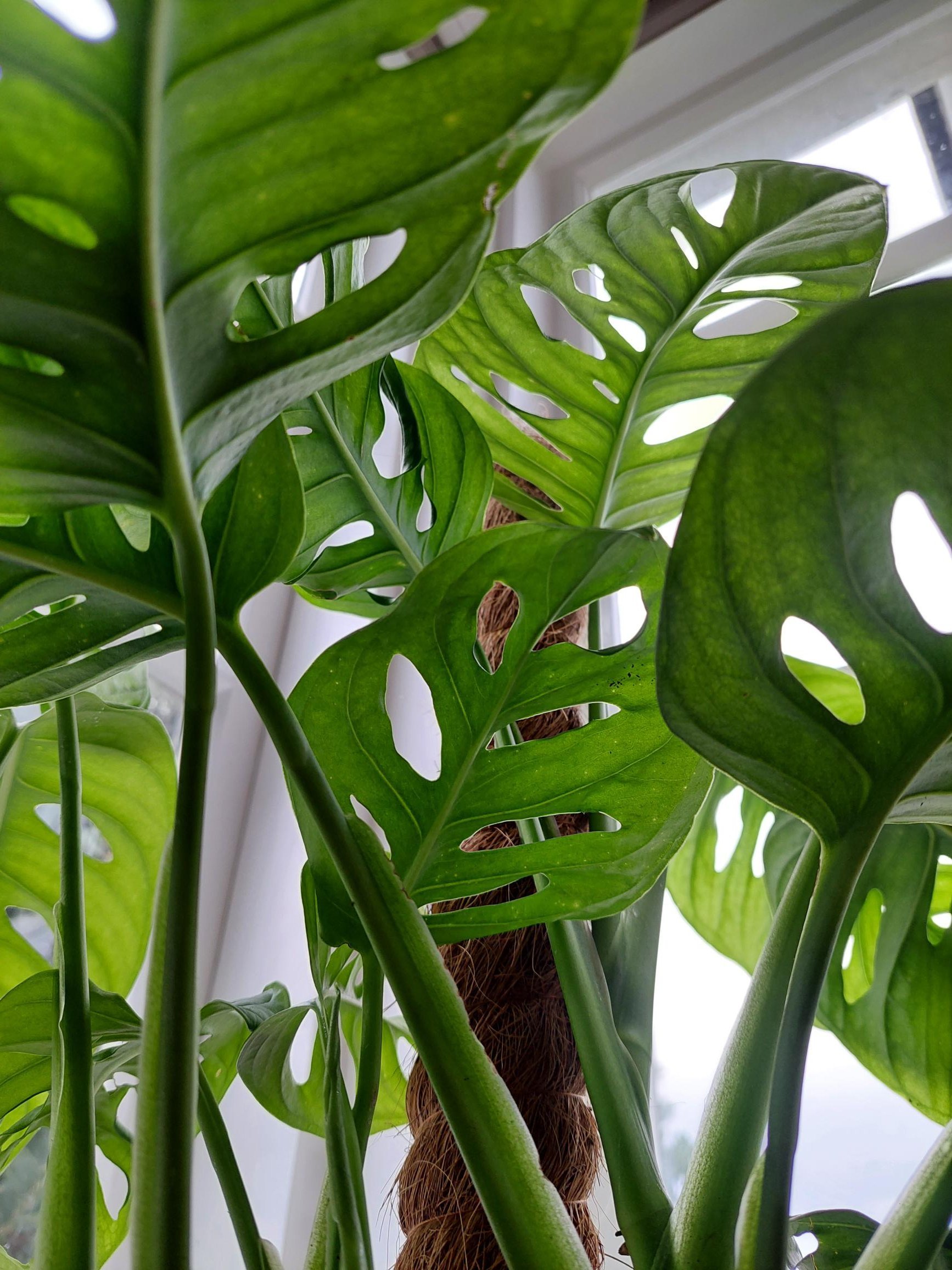
Move over, fiddle leaf fig — there’s a new leafy queen in town. Introducing Monstera obliqua, more commonly known as the "Monkey Mask", a hole-punched houseplant that’s making a splash with house plants enthusiasts. With its eye-catching perforated leaves and easy-going personality, this tropical beauty is as fascinating as it is manageable, even in chillier spots like Dunedin.
Native to the lush rainforests of Central and South America, Monstera obliqua is found weaving its way up trees in dappled jungle light. In its natural range including parts of Mexico, Peru, and Panama it thrives in warm, humid environments. But despite its exotic roots, the Monkey Mask adapts surprisingly well to life on a New Zealand windowsill with just a bit of TLC.
Let’s dive into what makes this plant so special and how you can help it flourish indoors. First off, let’s clear something up. Monstera obliqua is often confused with its close cousin Monstera adansonii — they both have holey (technically called fenestrated) leaves that look like botanical lacework. The true obliqua is quite rare in cultivation and is more delicate, with ultra-thin leaves that feel almost like tissue paper. But in everyday use, the term "Monkey Mask" is often applied to the more robust adansonii-type cultivar that’s ideal for home growing. Whichever version you’ve got, it’s a stunner.
The name Monkey Mask likely comes from the playful leaf shape — it’s easy to imagine a curious monkey peeking through the holes like jungle goggles. It’s an instant conversation starter, especially when its vines start tumbling out of a hanging basket or wrapping around a moss pole like a mini-indoor jungle.
 Monstera obliqua.
Growing Monkey Mask in colder climates
Monstera obliqua.
Growing Monkey Mask in colder climates

Living in a city like Dunedin, with its crisp winters and moody microclimates, might make you wonder if a tropical plant like this can cope indoors. The answer is: absolutely! The Monkey Mask prefers temperatures between 18°C and 26°C — basically, the range you’d find in a comfy living room. Keep it away from cold draughts and don’t let it get too close to icy windows in winter. These plants are happy in bright, indirect light. A north-facing window with a sheer curtain or a spot a few feet from a sunny windowsill works wonders.
One common mistake? Too much sun. Direct sunlight can scorch those delicate leaves, leaving ugly brown patches. In Dunedin’s winter gloom, consider supplementing with a grow light to keep it happy and prevent it from becoming leggy.
Watering and humidity: Less is more. These plants don’t like soggy socks. Let the top 2cm-3cm of soil dry out between waterings in Dunedin’s colder months; this might mean watering only once every 10 to 14 days. Root rot is public enemy number one.
Humidity is another consideration. While the Monkey Mask is forgiving, it does enjoy a bit of extra moisture in the air. A simple misting routine, or grouping plants together to create a microclimate, can help. If you’re feeling fancy, a pebble tray or small humidifier works too.
Climb or trail? One of the joys of this plant is its versatility. Let it cascade dramatically from a shelf or hanging pot or train it upward on a moss or coir pole to mimic its natural climbing habit. Supporting the vines encourages bigger, more fenestrated leaves. Fertilise lightly during the growing season (spring through early autumn) with indoor plant food every few weeks. In winter, stop when the plant is resting. Fun fact. In the wild, Monstera obliqua is pollinated by beetles and produces small edible fruit but don’t hold your breath for that in your Dunedin living room. Focus instead on its striking foliage and its air-purifying perks.












